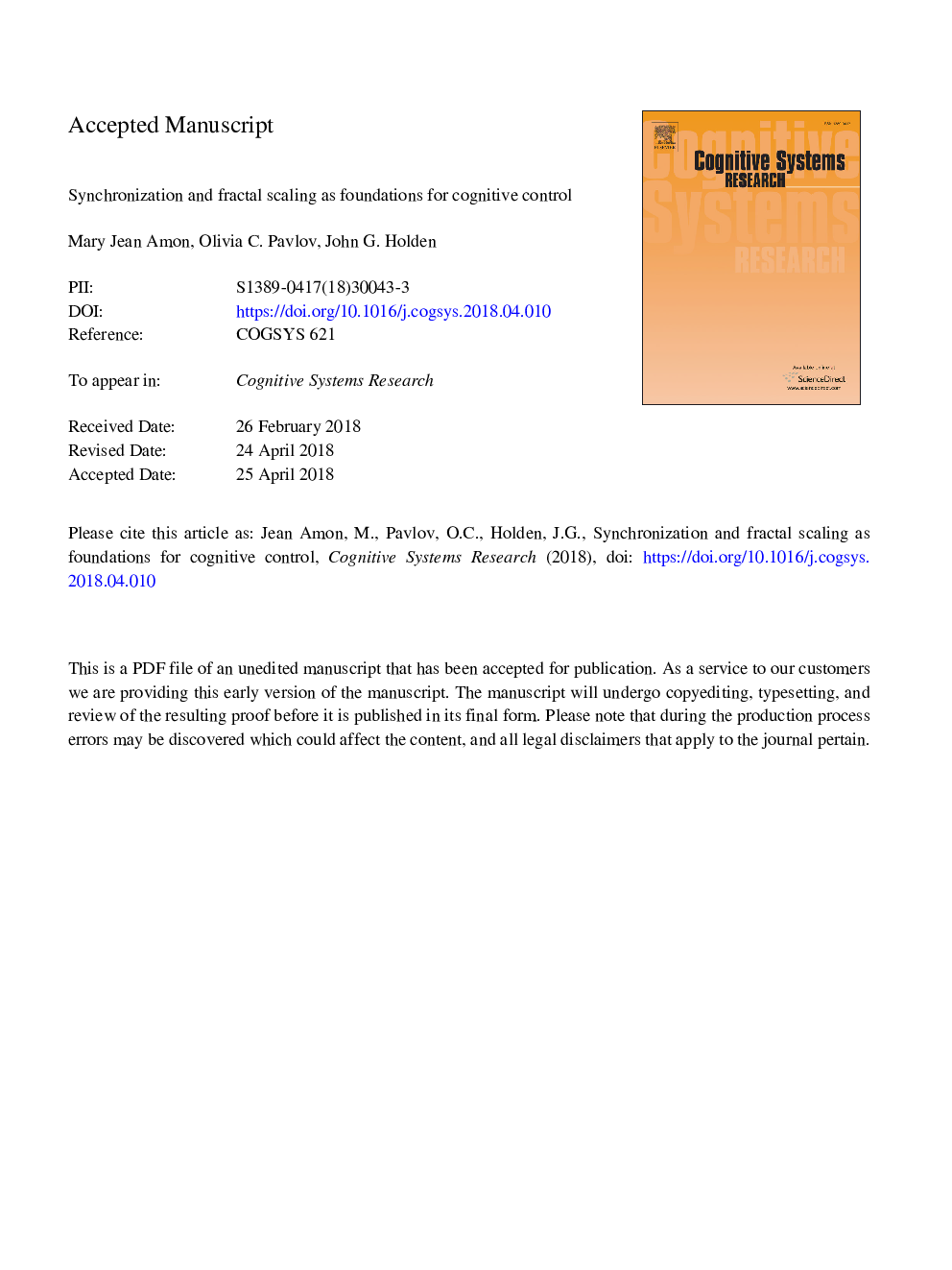| Article ID | Journal | Published Year | Pages | File Type |
|---|---|---|---|---|
| 6853749 | Cognitive Systems Research | 2018 | 85 Pages |
Abstract
This article investigates the degree to which the intrinsic propensity for entrainment in oscillatory systems serves as a plausible foundation for understanding the assembly and flexibility of cognitive systems. Three experiments tested for the strength of performance entrainment to oscillations inserted into event timing and stimulus properties of cognitive tasks. In the first temporal estimation experiment, attractor strength analyses revealed participants spontaneously entrained to sinusoidal changes in the duration of inter-trial intervals. A second simple reaction time task introduced oscillatory changes to the inter-stimulus interval durations across trials, and attractor strength analyses revealed weaker but reliable entrainment to the input signals. A third dyadic temporal estimation task revealed oscillatory entrainment that was distributed across pairs of participants. The experimental results were evaluated in terms of coupled oscillator dynamics and short-term perceptual lags. The entrainment hypothesis was most successful in explaining the empirical patterns, suggesting that cognitive performance relies on coordinative activity. Together, the three studies demonstrated coordinative activity over a range of temporal scales and distributed across individuals comprising the dyads. The simple reaction time study illustrated within-trial coordinative dynamics; individual temporal estimation illustrated across-trial coordination, and dyadic temporal estimation illustrated person-to-person coordinative dynamics. The findings underscore the role environmental constraints impose on cognitive activity and demonstrate how seemingly disparate features of distinct cognitive tasks can be assimilated in terms of synchronization principles.
Related Topics
Physical Sciences and Engineering
Computer Science
Artificial Intelligence
Authors
Mary Jean Amon, Olivia C. Pavlov, John G. Holden,
